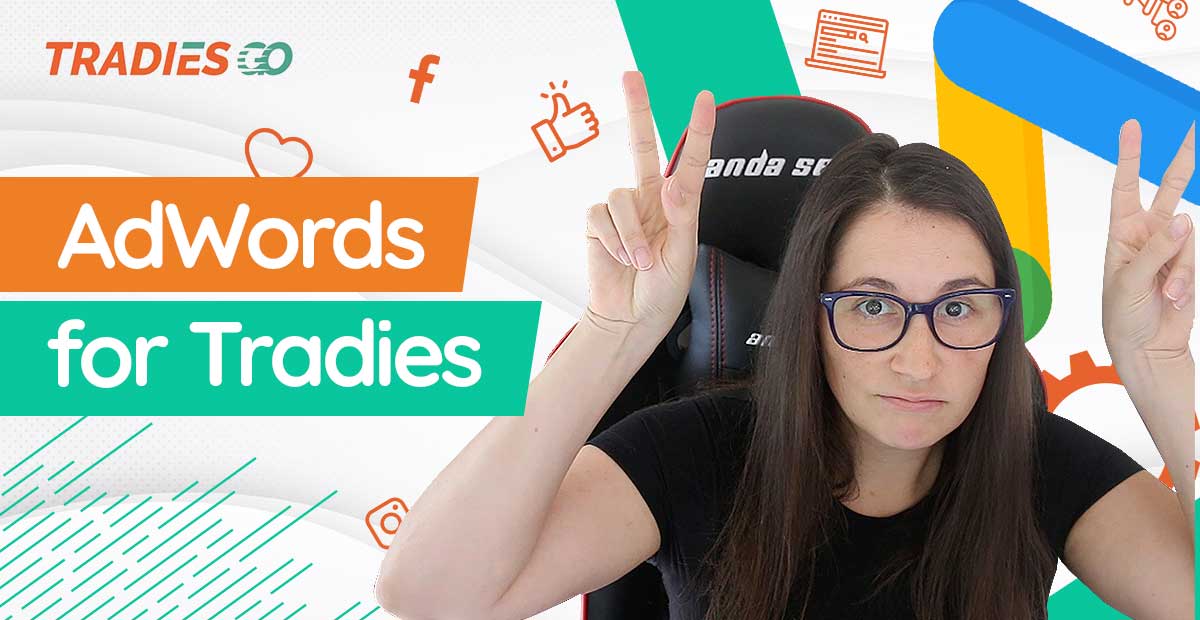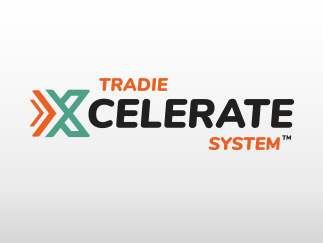Google Ads: The Basics on Performance Benchmarks for Trade Business
When you want to get your business in front of more eyeballs, investing in a pay-per-click platform like Google Ads – formerly known as Google Adwords – is a great way to go about it.
Not only can these platforms get you in front of a large, yet segmented audience within a relatively short timeframe and deliver a strong overall CTR for tradies, but they can also be set according to your budget.
The thing is, as is the case with so many marketing channels, the results you get from Google Ads depend on the amount of energy, money and time you invest – and if you want to make that investment work hard for you, a solid understanding of your strategy, goals and budget is key.
Above all of this, it’s important to understand the factors that set Google Ads successes apart from campaigns that miss the mark – and whether you’re starting your first campaign or honing an existing one, this article will cover all the need-to-know basics.
What to measure when running Google Ads
The magic of Google Ads is that everything about your approach to advertising can be tweaked and tailored to fit you – which sounds great, but it can also be a double-edged sword.
The problem with having so many options is that it can leave you wondering where to focus your efforts. Should you be concentrating on getting the ad in front of more people, getting more people to click on it, getting more qualified leads to your website, or all three?
In answer to that question, we’ve created a blueprint summary of four key Google Ads metrics you need to be measuring.
Benchmarks:
Average click-through rates (CTR)
in a nutshell, the average CTR for tradies defines how many people click on your ads.
Average cost-per-click (CPC)
how much you have to spend to get those people clicking on your ads.
Average conversion rate
how many people buy from you after clicking on your ad.
Average cost-per-action (CPA)
how much it costs to get your prospect to take the action you want. If you wanted to know about the total average cost of ads for plumbers, for example, this metric would tell you everything you needed to know.
Understanding each of these benchmarks will help you determine what really matters for your business, and where you sit relative to your competition on those key factors.
The key here is “relative to your competition” – because if you measure yourself against an impossible ideal benchmark, you’ll always be disappointed.
With this in mind, let’s cover each of these benchmarks in a little more detail.
Average click-through rate
The meaning of “click-through rate” (CTR) is all in the name: a measure of how many clicks your ad receives. For example, if 100 people were to see your ad and 20 people clicked on it, your CTR would be 20%. That click-through is key because it indicates a level of interest from your prospective client or customer – and if that level of interest is high, it’s a good sign that your ads are doing their job and reaching the right people.
CTR Adwords for tradies: what’s the average result?
The average CTR across all industries is 3.17% for search and 0.46% for display ads. The stats show that the average CTR for tradies is fairly strong, coming in slightly below average with CTRs of 2.61% for search and 0.5% for display.
Again, because CTRs on Google Ads have always varied by industry, it’s important to make sure that the benchmarks you set for your business are drawn from the right data.
It’s also important to remember that CTR is not the be-all and end-all of success in the world of online marketing campaigns – it’s only the beginning, which is the perfect segue into the next benchmark.
Average cost-per-click (CPC)
Attracting clicks is a great measure of success for your advertising because it means your prospects like your content enough to want to see more, but here’s where it gets a little more complicated:
Those clicks are not made equal. Some will come more naturally than others – depending on factors like targeting, competition and your quality score. After all of that, they won’t matter much if your visitors don’t take the desired action (more on all of that in a paragraph).
The good news is that you can manage the cost of this benchmark in two ways:
- Choosing low-competition keywords and writing effective ad copy. Achieving a strong CTR for tradies (and for professionals every other industry) depends first on the quality of your ads and their ability to get the right people interested in your content.
- Setting a smart budget. Google Ads allows you to apply a maximum budget to your CPC campaign, so you can run ads for a month, test the results and tweak your ads and budget amounts accordingly.
Looking at CPC metrics is a great way to gauge the value you can expect to get out of your campaign. You can find out information specific to your profession; for example, the average cost of ads for plumbers in Sydney.
It’s worth noting that while an influx of low-cost clicks is great for your visibility, you won’t see the difference in your bottom line unless those people convert into customers – and we’ll cover all of that in the next few paragraphs.
What is the average Google Ads CPC?
Benchmarked against the average CPC across Google Ads campaigns – $2.69 for search and $0.63 for display – trade businesses generally perform quite well.
With an average CPC of $2.56 for search and $0.54 for display, the industrial services industry is a great place to be for strong results at a relatively minimal cost.
Average conversion rates
In the context of a successful Google Ads campaign, attracting visitors to your website is only the beginning. Of course, the main goal is to bring money into your business by converting those visitors into paying customers – and even a strong CTR for tradies doesn’t mean much if clients and customers aren’t buying. That’s where average conversion rates come into play.

What is the average Google Ads conversion rate?
The word “conversion” means different things for different industries and businesses, and the rates of conversion will depend largely on that end goal and the level of investment required from your visitors.
For example, if your goal is to have potential clients book a free call (low-investment) that leads into a highly targeted marketing funnel, it will likely be easier to achieve than a product sale (high investment).
As with the average CTR for tradies, the best way to benchmark your company’s digital performance is through industry-wide statistics.
At 3.37% for search and 0.54% for display, the average conversion rate for industrial services comes in slightly below the cross-industry average of 3.75% and 0.77% respectively.
These results still outperformed several other sectors, including advocacy and real estate.
So how do you give your business the best chance of creating successful conversions? It comes down to a combination of factors:
-
- The quality of your ad. In order to be effective, your ad copy, design (if relevant) and placement needs to attract and qualify your potential customers and clients for you.
- The quality of the content that follows the ad. After the click-through comes your opportunity to back it up with substance and value.
- The quality of your website. Few things can communicate the value of your brand and business like an effective, user-friendly website – and you can bet that your potential customers will be checking it out if you make a good first impression.
- Your industry. Again, some industries just don’t perform as well as others in this race, and it’s important to understand what makes for reasonable expectations from the outset.
Average cost-per-action in Google Ads by industry
Your cost-per-action (CPA) – the average amount of money you spend to acquire a customer – is, in most cases, the most important campaign benchmark, because it ultimately determines how much money your campaign will bring in.
All you really need to know here is that the profitability of your business equals your average customer spend less your CPA – and it’s all relative, so if your customers are spending a lot on your products and services, you’ll have room to increase your CPA spend.
For tradies, the average CPA is high for search advertising ($79.28 compared to an average of $48.96) and low for display ($51.58 compared to $75.51). To use the previous example again, this means that the average cost of ads for plumbers will likely be higher for search advertising than display.
Cost-per-action is the only metric of those listed to really consider your customers’ average spend – and that can change everything.
As we mentioned above, a high average customer spend is key – and if you’re able to increase it without blowing out your CPA, you’ll be onto a winning formula.
The bottom line is that all of your ads will be competing with other companies’ ads for attention, conversion and market share, so it begs the question:
How can I tell whether my ads are measuring up to my competitors’?
The answer to that question is another question.
What is a Quality Score and how can I improve it?
The team at Google created the Quality Score diagnostic tool to help advertisers gauge the quality of their ads in comparison with their competitors. It also has a direct impact on your benchmarks and your CPC value, so you could say it’s a key consideration within a healthy campaign.
If your quality score is low, don’t panic – one of the following factors may explain it:
- The link between your keywords and your ad copy isn’t strong enough. Rather than trying to slip unrelated keywords into your ads, focus on capturing the main point of your campaign and including the most relevant words.
- Your landing page doesn’t cut it. Your landing page needs to give visitors what they want when the click on the ad. It sounds simple, but many businesses are not doing this well – and it could be your opportunity to outperform your competition.
- Your Google Ads account has performed poorly in the past. In this case, it’s important to review your change history for any sudden drops and see if this can be rectified.
- The ad has a low CTR. Sometimes, you just have to take a trial and error approach, mixing different versions of copy and/or images to find a working combination.
The basic premise here is that a great ad that lands on a relevant page will achieve a high quality score and, with any luck, score a few more leads for your business.
The final word on CTR Adwords for tradies
In short, the effectiveness of your campaign depends largely on the measures you take to ensure a strong return – and learning the ins and outs of the platform is the first step in give yourself the best shot at success.
Google Ads can be a complicated game, and while basic tweaks to your website design and ad copy may make a big difference, data is key. If you haven’t been looking at the data – or you’re not sure what to look for – it might be time to up the ante (and your investment in the Google Ads platform).
Need a hand getting your Google Ads platform into shape? Contact our team and ask about our PPC advertising offers.



